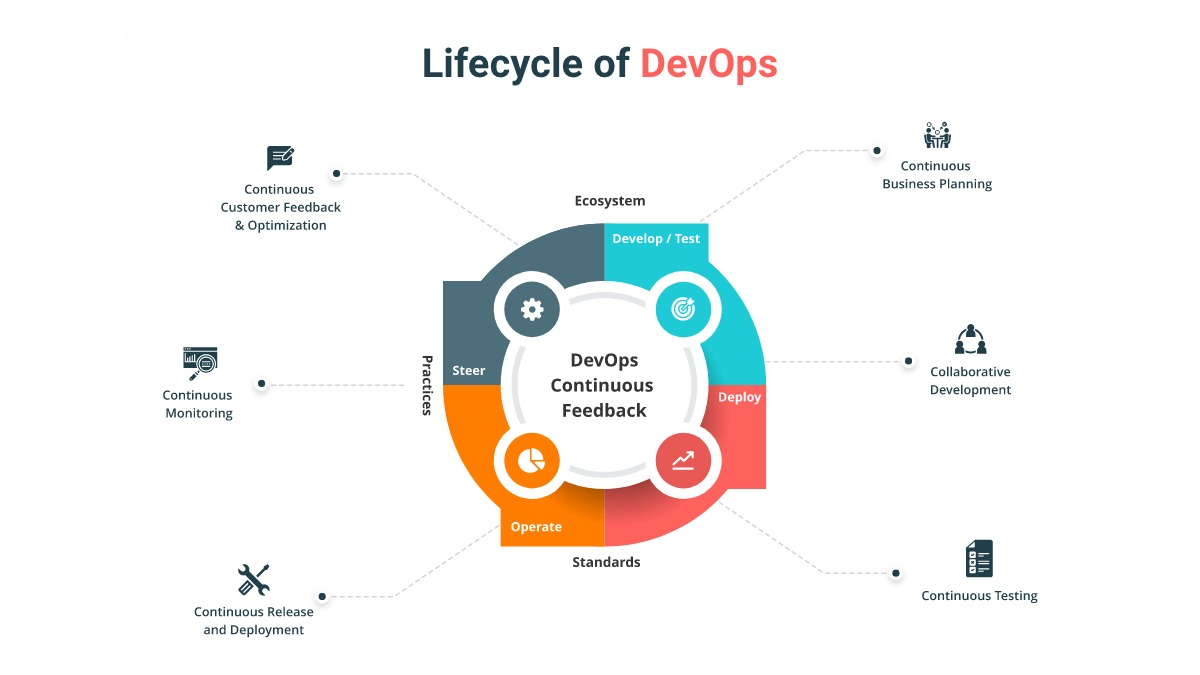1. Introduction to DevOps
Let’s face it—software development used to be a pretty bumpy ride. Developers wrote code and tossed it over to the operations team, hoping it would magically work in production. Spoiler: it rarely did. That’s where DevOps comes into the picture. It isn’t just a buzzword—it’s a revolution in how software is developed, deployed, and maintained.
DevOps, short for Development and Operations, is a cultural and professional movement that emphasizes collaboration, automation, and integration between software developers and IT operations. Its primary goal is to shorten the development lifecycle and deliver high-quality software continuously.
The concept of DevOps arose from the need to reduce the friction between teams responsible for writing code and those in charge of deploying and maintaining it. Before DevOps, the divide between dev and ops teams often led to slow releases, frequent bugs, and finger-pointing during downtime. DevOps transforms this dynamic by fostering a unified workflow, where everyone shares responsibility for the product’s performance and stability.
2. The Philosophy Behind DevOps
At its core, DevOps is as much about culture as it is about tools. It’s built on a set of key principles:
- Collaboration: Dev and Ops no longer work in silos. They work as a single unit.
- Automation: Repetitive tasks are automated to increase speed and reduce human error.
- Customer-centric mindset: Feedback is continuous, and teams respond quickly to user needs.
- Responsibility and accountability: Everyone owns the code—from development through production.
The DevOps approach encourages organizations to treat infrastructure the same way they treat applications: through code, versioning, and automation. It changes the way we approach software development—from large, risky releases to small, frequent updates that are easier to test, deploy, and manage.
Adopting DevOps means shifting from a project mindset (develop once, handoff, done) to a product mindset (continuous development, deployment, and improvement). This transformation impacts the entire software development life cycle (SDLC), introducing agility, faster feedback loops, and more robust deployment processes.
3. Key Components of DevOps
DevOps isn’t a one-size-fits-all framework. It’s composed of several critical components that work together to streamline software development:
- Continuous Integration (CI): CI ensures that new code changes are automatically tested and integrated into the existing codebase. Developers push small changes frequently, reducing the risk of breaking the system.
- Continuous Delivery (CD): CD automates the delivery of code to different environments. This means that every change that passes automated tests is ready for production deployment, minimizing delays and increasing release frequency.
- Infrastructure as Code (IaC): Managing infrastructure through code (rather than manual configuration) allows for repeatable, scalable, and reliable deployments. Tools like Terraform and Ansible help maintain consistency across environments.
- Monitoring and Logging: Constant monitoring helps detect issues before they become disasters. By analyzing logs and metrics, teams can understand performance, trace bugs, and make data-driven decisions.
When these components come together, you get a pipeline that allows for fast, safe, and consistent software delivery—the holy grail of modern software engineering.
4. DevOps Lifecycle
DevOps isn’t just about automation—it’s about a cyclical, collaborative workflow that supports continuous improvement. Here’s what a typical DevOps lifecycle looks like:
- Plan: Teams gather requirements and set development goals. Agile methodologies often complement this phase.
- Develop: Code is written, peer-reviewed, and committed to version control systems like Git.
- Build: Code is compiled, and packages are created. Build automation tools such as Jenkins kick into action here.
- Test: Automated unit, integration, and acceptance tests ensure code quality.
- Release: Code is prepared for deployment through CD tools.
- Deploy: Changes are pushed to production or staging environments in an automated, consistent manner.
- Operate: Monitoring, security, and infrastructure management keep the system running smoothly.
- Monitor: System and user feedback are collected, analyzed, and used to improve the next cycle.
This feedback loop is essential—it helps teams detect issues early, understand user behavior, and continuously refine their processes and products.
5. DevOps Tools Landscape
There’s a rich ecosystem of tools designed to support every stage of the DevOps lifecycle. Some popular options include:
- Version Control: Git, GitHub, Bitbucket
- CI/CD: Jenkins, GitLab CI/CD, CircleCI, Travis CI
- IaC: Terraform, Ansible, Puppet, Chef
- Containers & Orchestration: Docker, Kubernetes
- Monitoring & Logging: Prometheus, Grafana, ELK Stack, Datadog
Choosing the right tools depends on your team’s needs, project scope, and existing infrastructure. What matters more than the tool itself is how effectively it’s integrated into your workflow.
DevOps isn’t about flashy tech—it’s about creating a culture of efficiency, transparency, and accountability where development and operations work hand-in-hand to create better software, faster.


